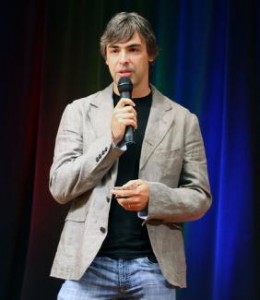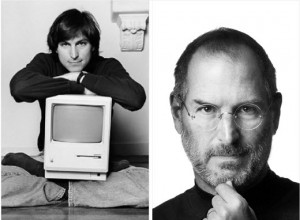
The world’s leading brands – Apple, Google, Coke, McDonald’s, Amazon – represent great companies and those companies are the product of great leadership.
Steve Jobs of Apple, Larry Page of Google, and Jeff Bezos of Amazon founded (or cofounded) companies that have changed our everyday lives. They all fostered a culture of innovation and they all prioritized their passion – for design, for excellence, for the customer experience – before their profits.
As Larry Page put it, “If we were motivated by money, we would have sold the company long ago and ended up on beach.” As Jobs put it “Being the richest man in the cemetery doesn’t matter to me … Going to bed at night saying we’ve done something wonderful… that’s what matters to me.”
Their leadership in innovation stems from the fact that they don’t just focus on making the next great product, but on something even larger. Said Page, “Our goal is to organize the world’s information and make it universally accessible.” You may recall the story of when Steve Jobs was hiring a soda executive to work at Apple, he asked, “Do you want to spend your life selling sugared water or do you want to change the world?” (That hire, by the way, did not turn out well for Jobs proving that even the smartest leaders are fallible.)
Jobs created a culture of innovation at Apple by encouraging his colleagues to “think different” but also to think big. He convinced them that they were part of something “much bigger than any of us here” and that “the people who are crazy enough to think they can change the world are the ones who do.”
Bezos strikes similar chords, saying, “What we want to be is something completely new.” Then he looks even further, “Every new thing creates two new questions and two new opportunities.”
Even at a well-established brand like McDonald’s, innovation is a driver of success. When CEO James Skinner took over, profits were falling. In the past, the company’s attitude was “we’ll make it, they’ll buy it,” he said. The company’s only growth strategy had been to build more stores. Skinner’s “Plan to Win” strategy changed all that. It focused on improving the quality of the food and the ambience at existing stores and developing new products that matched consumer tastes and trends. McDonald’s profits improved by $30 billion in three years and Skinner was named 2009 Executive of the Year.
Under Muhtar Kent, Coca Cola is implementing the 2020 plan, which will transform its bottling and distribution system. It also maintains a multimillion-dollar Innovation Lab to create new products and designs. Recently, one of its innovations reduced water consumption by 4% – at a savings of $61 million!
Just as all businesses can benefit by focusing on innovation and the passion to do great things, a single-minded focus on the needs and wants of consumers has also been a hallmark of the best brands. And that’s another quality that Jobs, Page, and Bezos had in common. In fact, they were all influenced by the same customer experience “guru,” Donald Norman, who wrote the groundbreaking work on product design, The Design of Everyday Things. Jobs liked him so much he hired him to work at Apple.
What they all got from Norman was the notion that “the user is always right.” If a customer expects a product or service to work a certain way, then that’s how it should be designed to work. Sounds basic, right? But in many cases products are designed for ease or cost of manufacture rather than ease of use. Jobs, Page, and Bezos knew to see through the customers’ eyes first, and then produce a product or service that met their expectations.
Jeff Bezos put it well: “There are two ways to extend a business. Take inventory of what you’re good at and extend out from your skills. Or determine what your customers need and work backward, even if it requires learning new skills.”
According to Larry Page, that’s what the famous Google corporate motto is all about, “We have a mantra: ‘don’t be evil,’ which is to do the best things we know how for our users, for our customers, for everyone.”
They put themselves in the position of their customers and designed products that would match consumers’ wants and needs, and that would be a pleasure to use. As Jobs once said of the Mac operating system, “We made the buttons on the screen look so good you’ll want to lick them.”
By following their passions and their visions, and by designing their businesses around their customers, the world’s leading brands all offer a model for leadership. In the words of Larry Page, “You don’t need a 100-person company to develop that idea.”
Just in case you missed it, Click Here for Part One. OR Click Here for Part Two.









1 Comment